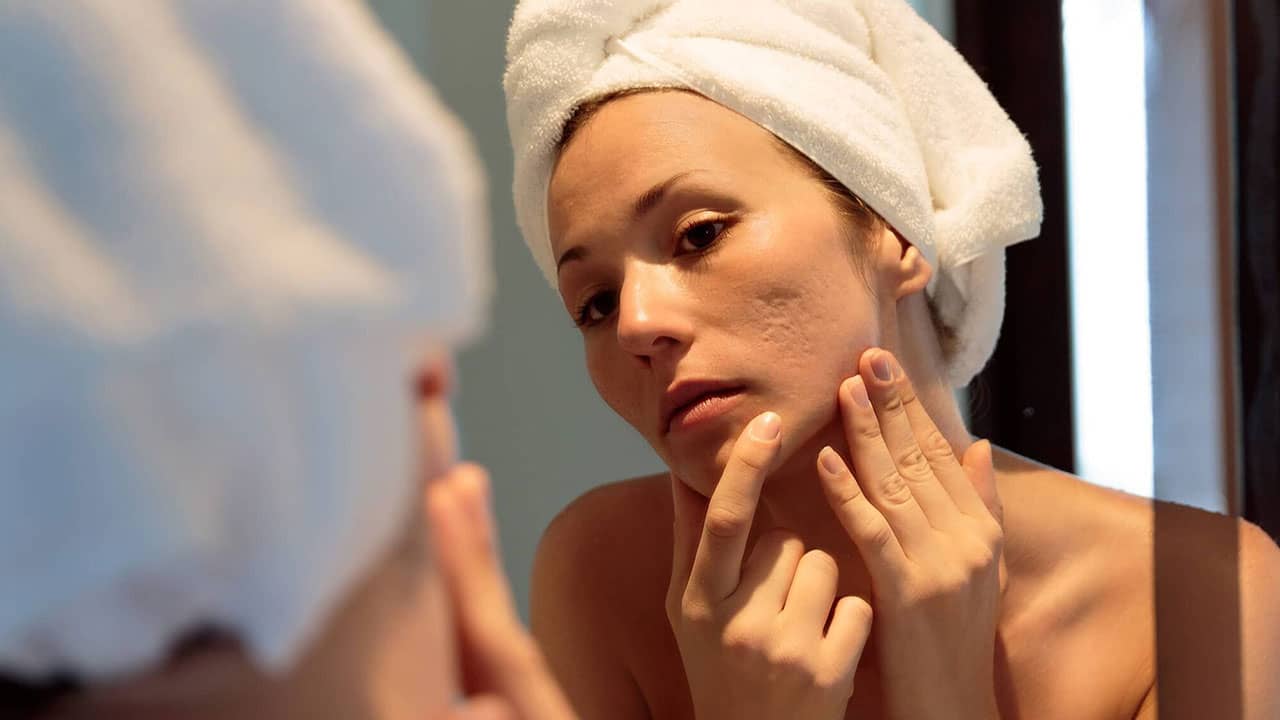Peeling, or exfoliating, is one of the best ways to address specific skin concerns, from dullness and acne to hydration and wrinkles. Each skin issue responds differently to peeling, so it’s essential to choose the right type of peel for your goal. This guide will break down the best peeling treatments for each skin concern, recommended products from top brands, and tips for using them safely.
Table of contents
Peeling for Skin Radiance
Peeling for Acne
Peeling for Hydration
Peeling for Pigment Spots
Peeling for Wrinkles
Peeling for Skin Aging
Tips for Safe and Effective Peeling
FAQs on Peeling for Specific Skin Concerns
Peeling for skin radiance
If your skin looks dull or lacks glow, peeling can help restore radiance by removing dead skin cells that sit on the surface, making your complexion look tired and uneven. A peel designed for radiance usually contains AHAs, which brighten and even out skin tone.
- Recommended Peels:
- Glycolic Acid Peel: Exfoliates deeply, revealing a brighter complexion. Product to try: L’Oréal Paris Revitalift Bright Reveal Brightening Peel Pads
- Vitamin C Peel: Vitamin C helps brighten the skin and fight free radicals that dull the complexion. Product to try: Ole Henriksen Truth Juice Daily Cleanser
- How to Use: Start with 1-2 times a week, depending on skin sensitivity, and always follow with sunscreen, as AHAs make skin more sensitive to UV rays.
Peeling for acne
Peeling is a powerful tool for managing acne. By using peels that contain BHAs like salicylic acid, you can unclog pores, reduce excess oil, and target the bacteria that cause acne. Peeling also helps reduce acne scars over time, improving overall skin clarity.
- Recommended Peels:
- Salicylic Acid Peel: Penetrates the pores to remove impurities and prevent future breakouts. Product to try: Paula’s Choice Skin Perfecting 2% BHA Liquid Exfoliant
- Jessner’s Peel: Combines salicylic acid with lactic and resorcinol acids to deeply exfoliate and improve texture. Product to try: Dr. Dennis Gross Alpha Beta Universal Daily Peel
- How to Use: Use salicylic acid-based peels up to twice a week to control acne. Jessner’s Peel is stronger and may be best administered by a dermatologist.
Peeling for hydration
While peeling is typically associated with removing dead skin, certain types of peels can also help hydrate. AHAs like lactic acid and PHAs gently exfoliate and increase moisture retention, making them ideal for dry or dehydrated skin.
- Recommended Peels:
- Lactic Acid Peel: Gently exfoliates while helping the skin retain moisture, leaving it soft and supple. Product to try: The Ordinary Lactic Acid 5% + HA
- PHA (Polyhydroxy Acid) Peel: Provides mild exfoliation without irritating or drying the skin, perfect for hydration. Product to try: Neostrata PHA Renewal Peel
- How to Use: Apply once a week, or as needed for hydration, and follow with a rich moisturizer to lock in moisture.
Peeling for pigment spots
Pigmentation issues, such as sunspots and dark spots, can benefit greatly from chemical peels. These peels help lighten hyperpigmentation by promoting cell turnover and breaking down melanin clusters. Glycolic acid, mandelic acid, and pigment-targeting formulas are ideal for this concern.
- Recommended Peels:
- Glycolic Acid Peel: Known for its brightening properties and ability to fade dark spots. Product to try: Pixi Glow Tonic
- Pigment Balancing Peel: Contains multiple acids to target stubborn pigmentation. Product to try: SkinCeuticals Advanced Pigment Corrector
- How to Use: Apply up to twice weekly, depending on your skin’s tolerance. Consistent use and sunscreen are key for optimal results.
Peeling for wrinkles
Chemical peels for wrinkles often contain retinoids and AHAs, which encourage collagen production and smooth fine lines. By removing dead cells, these peels promote skin renewal, making it look fresher and reducing visible signs of aging.
- Recommended Peels:
- Retinol Peel: Stimulates collagen production, smooths fine lines, and improves skin texture. Product to try: SkinCeuticals Retinol 0.5 Refining Night Cream
- TCA (Trichloroacetic Acid) Peel: A stronger peel that targets deeper wrinkles and sun damage. Product to try: Perfect Image TCA 15% Peel Gel
- How to Use: Retinol-based peels can be used once a week. TCA peels should be used sparingly and are best applied by a professional for safety.
Peeling for skin aging
Aging skin benefits from peels that boost cell turnover, stimulate collagen, and target pigmentation. AHAs like glycolic acid, BHAs, and enzyme-based peels help to brighten, firm, and refine aging skin for a youthful glow.
- Recommended Peels:
- Glycolic Acid Peel: Removes dead cells, boosts collagen, and brightens the complexion. Product to try: L’Oréal Paris Revitalift Bright Reveal Peel Pads
- Enzyme Peel: A gentle option that improves texture without being too harsh on mature skin. Product to try: Dermalogica Daily Milkfoliant
- How to Use: Use a glycolic or enzyme peel once weekly to maintain firmness and brightness. Always follow with SPF to protect the skin.
Tips for safe and effective peeling
- Patch test first: Test a small area to see how your skin reacts before applying a new peel.
- Use sunscreen daily: Peels make skin more sensitive to sunlight, so apply SPF generously.
- Moisturize: Peeling can dry out your skin, so follow up with a rich moisturizer to keep it hydrated.
- Avoid over-exfoliation: Limit peeling to once or twice a week, depending on your skin’s tolerance, to prevent irritation.
- Consult a dermatologist: For strong peels or if you have sensitive skin, consult a professional to find the safest option.
Also read: other types of peels for at-home use
Looking for gentle alternatives to chemical peels? Here are some at-home options that offer safe, effective exfoliation:
- Exfoliating Scrubs: Physical scrubs like Tree Hut Shea Sugar Scrub are gentle on the skin and can provide a polished, smooth feel.
- Enzyme Masks: Try Peter Thomas Roth Pumpkin Enzyme Mask, which exfoliates using enzymes for a mild, non-chemical peel.
- PHA Peels: PHAs are the mildest form of exfoliating acids and great for sensitive skin types. Product to try: Neostrata PHA Renewal Peel
FAQs on peeling for specific skin concerns
1. Can peels brighten dull skin?
Yes, glycolic and vitamin C peels are great for enhancing radiance.
2. Which peel is best for acne?
Salicylic acid peels work well for acne as they penetrate pores to clear oil and bacteria.
3. How do I choose a peel for hydration?
Look for lactic acid or PHA peels, which exfoliate gently while hydrating.
4. Are there peels for reducing dark spots?
Yes, glycolic acid and pigment balancing peels help fade dark spots over time.
5. What’s the best peel for wrinkles?
Retinol and TCA peels are excellent for targeting fine lines and wrinkles.
6. Can peels be used to combat skin aging?
Yes, peels like glycolic and enzyme peels renew the skin and boost collagen for anti-aging effects.
7. How often should I use a peel for my skin concern?
Generally, once a week, but adjust based on your skin’s tolerance and the peel’s strength.
8. Will peels make my skin peel visibly?
Stronger peels may cause visible peeling, but gentler peels may not show much shedding.
9. Do I need to use moisturizer after peeling?
Yes, moisturizing is essential to hydrate and protect the skin after exfoliating.
10. Are at-home peels safe for sensitive skin?
Yes, if you choose mild peels like PHA or lactic acid and use them sparingly.
Conclusion
Peeling is a powerful way to address a variety of skin concerns, from acne to aging. By choosing the right peel for your specific needs and following safety tips, you’ll be on your way to healthy, glowing skin!
What to read next


